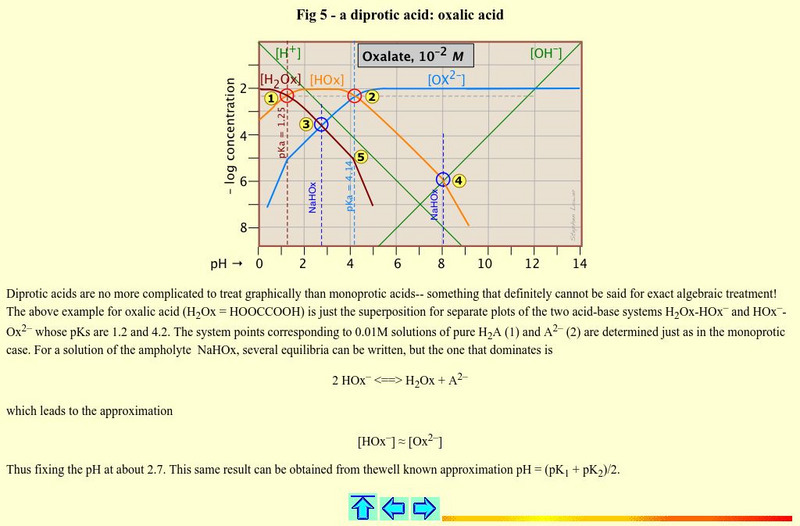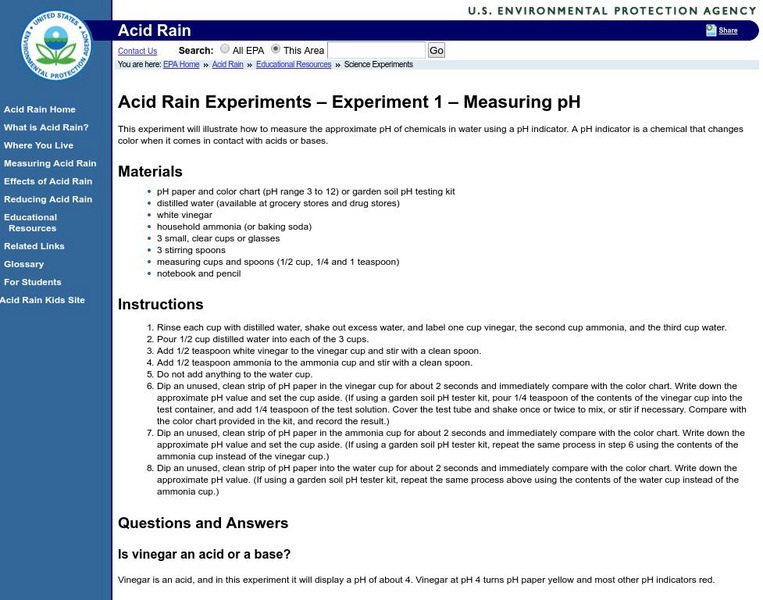Hi, what do you want to do?
CK-12 Foundation
Ck 12: Chemistry for High School
This digital textbook covers core chemistry concepts and includes interactive features, real-world examples, and videos.
Upper Canada District School Board
Tom Stretton's Advanced Placement Chemistry: Nuclear Chemistry
This online textbook chapter provides learners with advanced-level material on acids and bases.
University of Arizona
Pulse: Industrialization, Chemicals and Human Health
While learners gain an understand of basic environmental toxicology, they explore the health impacts of industrialization on society in these lessons. This is a cross curricular unit that addresses standards for eleventh grade in math,...
Chiral Publishing
Chiral Publishing: An Introduction to Chemistry: P H and Equilibrium
Learn where acids and bases fall on the pH scale and the correlation between hydrogen and hydroxide ions. See many examples of how to calculate the pH of a substance. Also find links to the chemistry textbook and tutorials.
Frostburg State University
General Chemistry Online: Water to Wine
The molecular basis of indicator color changes. Includes Chime structures for the acid and base forms of phenolphthalein, methyl orange, red cabbage indicator, and cyanidin diglucoside.
Other
The Acids, Alkalis and Salts Crossword
Test your chemistry knowledge with this exciting hands-on online crossword puzzle. Creative Chemistry has developed an on-line game for teachers to utilize in their classrooms.
Dartmouth College
Dartmouth College: Acids, Bases, and Buffers 1: Monoprotic and Polyprotic Acids
In this experiment, you will explore the behavior of the monoprotic acid (acetic acid) and the polyprotic acid (phosphoric acid). By titrating, you will examine the acid and conjugate base species present across the pH scale and the...
University of Waterloo (Canada)
Univ. Of Waterloo: Conjugate Acid Base Pairs
This page, created by a chemistry professor from the University of Waterloo, provides an introduction to conjugate acid-base pairs.
Chiral Publishing
Chiral Publishing: An Introduction to Chemistry: Weak Acid Equilibrium
Learn about what happens when a weak acid is added to water. View examples, an acid dissociation constant table, and a study sheet.
Chemistry Collective
Chem Collective: Determine the Concentration of Acetic Acid in Vinegar
A virtual lab where students determine the concentration of acetic acid in vinegar using a 0.110 M NaOH standard solution and an acid-base indicator, phenolphthalein.
Sophia Learning
Sophia: Calculations: P H, P Oh, [H+], [Oh ]
Created to teach students of the 21st century, SOPHIA is bringing chemistry calculations straight to your fingertips. Become the commander of your own learning experiences as you take part in this interactive lesson.
PBS
Zoom: Kitchen Chemistry
Did you know that chemistry can be found in your kitchen? Enter this amazing virtual world where your first stop is to the kitchen. Locate the clues and move on to the Lab Journal where you can test each item in two experiments: Cabbage...
Chemistry Collective
Chem Collective: Virtual Lab
Perform virtual lab experiments safely. Pour and mix specific amounts of various solutions on screen and observe changes in temperature and pH. Choose glassware and other tools (ie. bunsen burner, scale) to assist with virtual lab...
Chemistry Collective
Chem Collective: Virtual Lab: Default Virtual Lab Stockroom
Perform virtual lab experiments safely. Pour and mix specific amounts of various solutions on screen and observe changes in temperature and pH. Choose glassware and other tools (ie. bunsen burner, scale) to assist with virtual lab...
Wolfram Research
Wolfram Science World: Organic Chemistry
This site from ScienceWorld provides a brief look at some of the more common organic functional groups. The carboxylic acid group is also given. Quite a few links are provided at the bottom of the page for additional information.
Science Buddies
Science Buddies: Using Pennies to Test How P H Affects Copper Corrosion
In this science fair project, use a color-based reaction to test how pH affects copper corrosion in pennies.
Cosmo Learning
Cosmo Learning: Senior Chemistry With Chemguy
A collection of video lectures from a general chemistry class for high school students. Lectures cover topics such as equilibrium, thermochemistry, electrochemistry, and acids and bases with forty-four lectures. Lectures vary in length...
Simon Fraser University
Chem1 Virtual Textbook: Oxalic Acid
Acting as an overview from the General Chemistry Virtual Textbook, this site acts as one in a series of slides on acid-base systems. This particular slide deals with a diprotic acid, oxalic acid.
CK-12 Foundation
Ck 12: Acid Base Neutralization
[Free Registration/Login may be required to access all resource tools.] Students will understand and differentiate among acid-base reactions, precipitation reactions, and oxidation-reduction reactions.
University of Arizona
Ua: Chemistry Tutorial
This general tutorial begins with an explanation of the polarity of the water molecule and the effects this polarity has on the properties of water. Goes on to introduce organic molecules and has a thourough tutorial on the third page.
Cosmo Learning
Cosmo Learning: Introduction to Solid State Chemistry
A collection of video lectures from a course that investigates the application of basic chemistry principals to engineering systems. The course draws from industrial practice to give examples of the application in engineering systems. In...
CK-12 Foundation
Ck 12: Physical Science: P H Concept
[Free Registration/Login may be required to access all resource tools.] Definition of pH and the strength of acids and bases. How to use the pH scale and why pH is important to living things.
Texas Instruments
Texas Instruments: Microscale Acid Base Titration
In this activity, students' will use a pH sensor to determine the change in pH during a titration of a known concentration of NaOH and unknown concentration of HCl. Students' will determine the concentration of unknown HCl.
US Environmental Protection Agency
Epa: Measuring P H Experiment
This is an activity that deals with acid rain. "This experiment will illustrate how to measure the approximate pH of chemicals in water using a pH indicator." It is easy to follow the comprehensive set of directions.






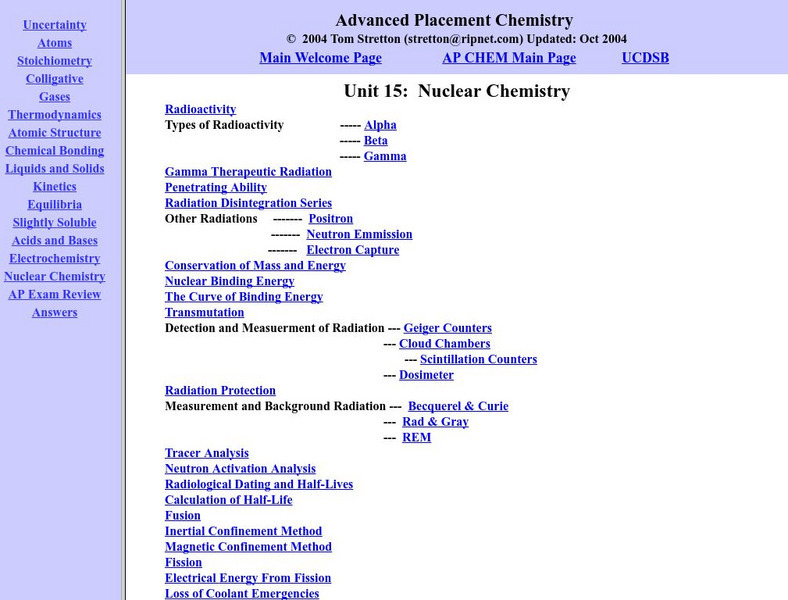

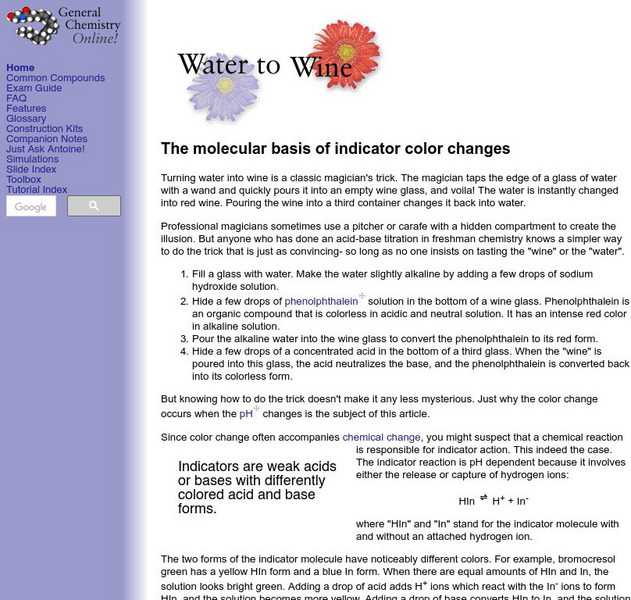
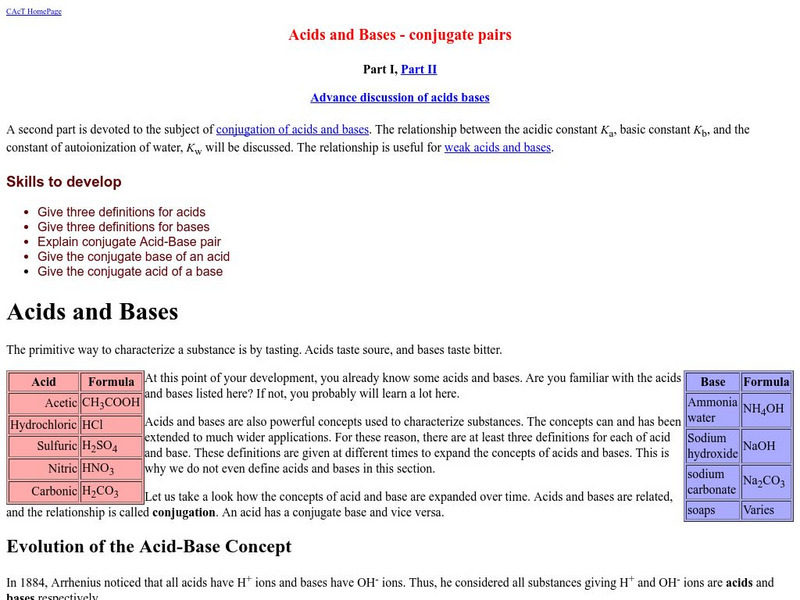


![Sophia: Calculations: P H, P Oh, [H+], [Oh ] Unit Plan Sophia: Calculations: P H, P Oh, [H+], [Oh ] Unit Plan](https://content.lessonplanet.com/knovation/original/218428-81e36f3b80bf76c44b558309eac1c9b2.jpg?1661242989)




